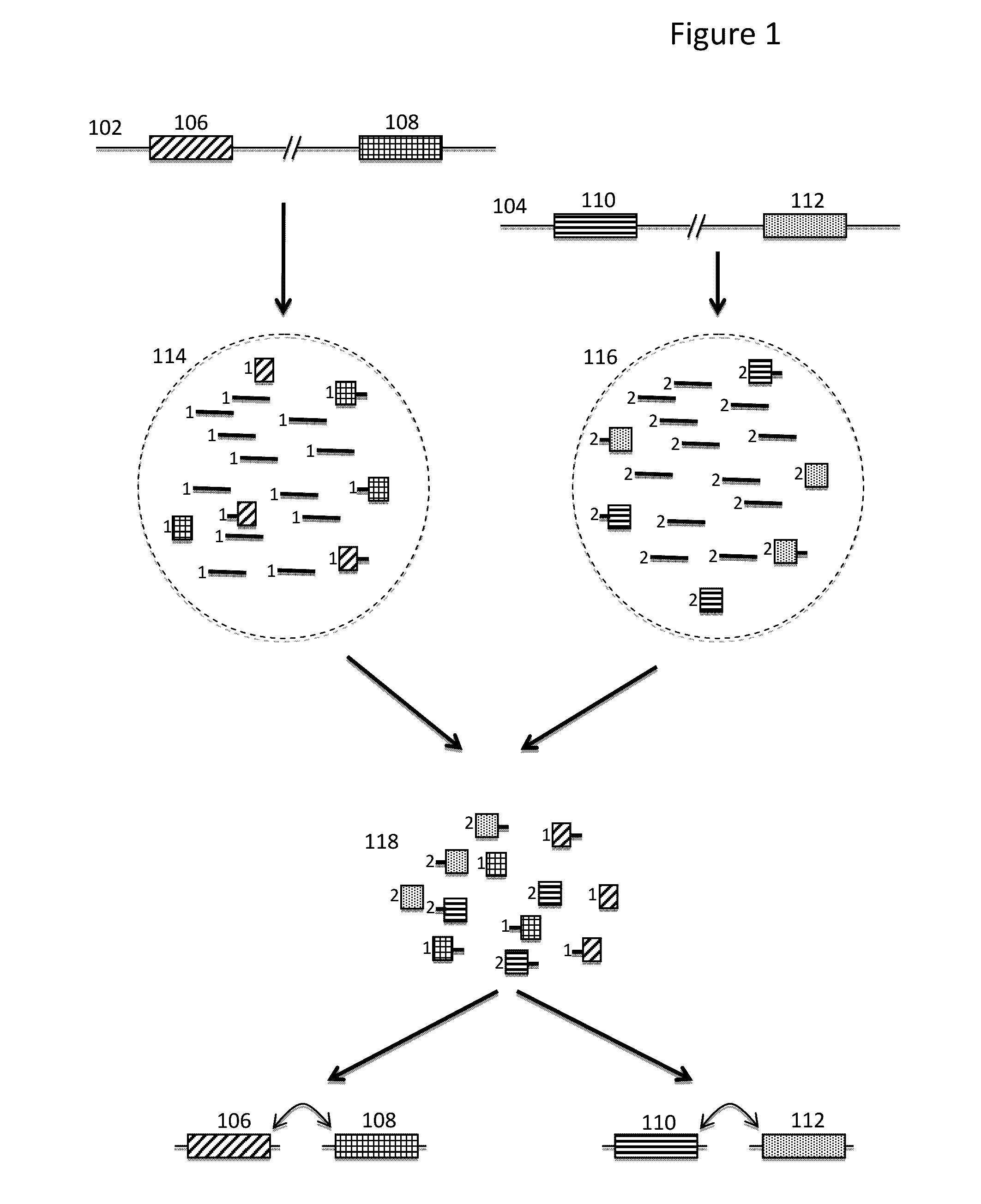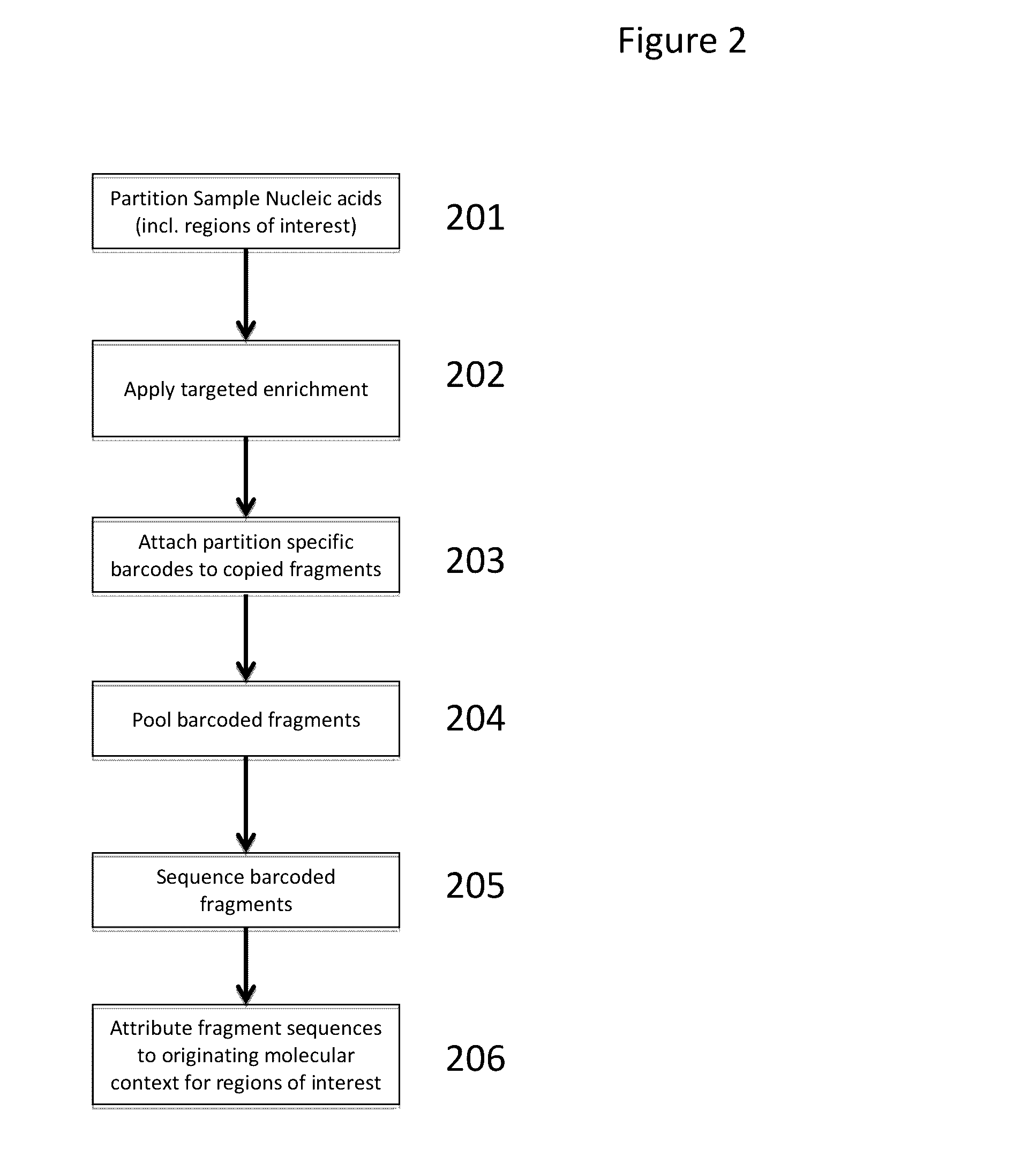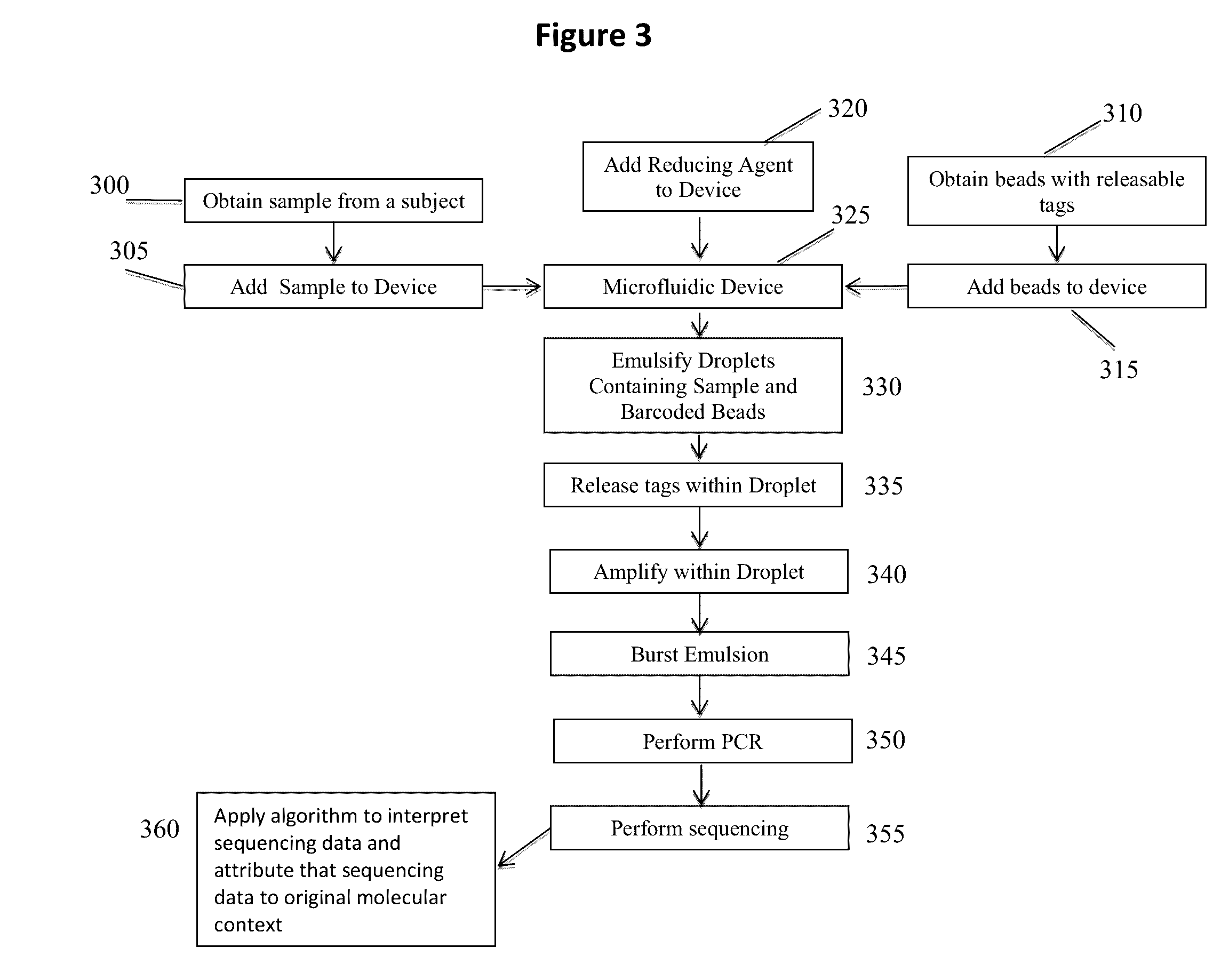Methods and compositions for targeted nucleic acid sequence coverage
a nucleic acid and sequence technology, applied in the field of methods and compositions for targeting nucleic acid sequence coverage, can solve the problems of low efficiency, low efficiency, and low efficiency of de novo sequencing of the entire genome, and achieve the effect of high throughput and high accuracy
- Summary
- Abstract
- Description
- Claims
- Application Information
AI Technical Summary
Benefits of technology
Problems solved by technology
Method used
Image
Examples
examples
Example: Targeted Coverage of TP53 Gene
[0135]An amplification reaction targeting the TP53 gene was conducted. Tumor protein p53, also known as p53, cellular tumor antigen p53 (UniProt name), phosphoprotein p53, tumor suppressor p53, antigen NY-CO-13, or transformation-related protein 53 (TRP53), is a protein that is encoded by the TP53 gene in humans. The p53 protein is crucial in multicellular organisms, where it regulates the cell cycle and, thus, functions as a tumor suppressor, preventing cancer. As such, p53 has been described as “the guardian of the genome” because of its role in conserving stability by preventing genome mutation. Hence TP53 is classified as a tumor suppressor gene.
[0136]Targeted amplification of the region of the genome containing the TP53 gene (which is about 19149 by in length) was conducted using a total of 96 primers spanning the entire gene in a multiplex reaction. The primers were designed to tile across this region of the genome about 400 by apart. The...
PUM
| Property | Measurement | Unit |
|---|---|---|
| volumes | aaaaa | aaaaa |
| volumes | aaaaa | aaaaa |
| volumes | aaaaa | aaaaa |
Abstract
Description
Claims
Application Information
 Login to View More
Login to View More - R&D
- Intellectual Property
- Life Sciences
- Materials
- Tech Scout
- Unparalleled Data Quality
- Higher Quality Content
- 60% Fewer Hallucinations
Browse by: Latest US Patents, China's latest patents, Technical Efficacy Thesaurus, Application Domain, Technology Topic, Popular Technical Reports.
© 2025 PatSnap. All rights reserved.Legal|Privacy policy|Modern Slavery Act Transparency Statement|Sitemap|About US| Contact US: help@patsnap.com



